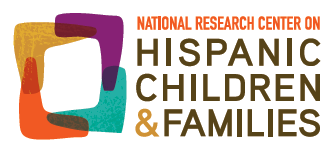The September issue of the Quality Improvement Center for Workforce Development (QIC-WD) newsletter highlights the findings from eight multi-year projects conducted to address workforce challenges and improve worker performance, well-being, and retention. QIC-WD project team members worked closely with local staff from public child … Read More
Child Well-Being

A Change Framework for Engaging Fathers and Paternal Relatives and Promoting Racial Justice
A recent brief from the Fathers and Continuous Learning in Child Welfare (FCL) project explains how participants in a Breakthrough Series Collaborative (BSC) used a guiding framework to strengthen the engagement of fathers and paternal relatives with children involved in … Read More

Webinar Provides Strategies for Reaching and Engaging Families of Color
An on-demand webinar, “Racial Equity in Targeted Recruitment and Support: Strategies for Reaching and Engaging Families of Color,” from AdoptUSKids explores the question, “How does our pool of families relate to racial equity?” It suggests that part of addressing racial equity is … Read More

Among Latino Children, Nearly Half Live in Households That Own Their Homes
Forty-nine percent of Latino children live in housing units that are owned by someone in their household, according to our new analysis of the American Community Survey (ACS) 2017–2021 5-year data. This includes 36 percent of Latino children who live in … Read More

Defining and Measuring the Complexity of Stepfamilies in the United States
Overview Stepfamilies are common in the United States. By definition, these families occur when an individual or the person with whom they are partnering through marriage or cohabitation has a child from a past relationship. There are many types of stepfamilies, … Read More

Improving Services for Expectant and Parenting Youth in Care
Entering and navigating the child welfare system can be stressful and confusing for young people separated from their families. It can be even more challenging for young people who are parents, are pregnant, or are expecting. Expectant and parenting youth … Read More

Kinship Care Supports the Academic Performance of Children
Children and youth who successfully learn how to read, write, and perform basic math skills are more likely to go to college, find good jobs, and attain financial security in adulthood—all of which support their overall well-being across the lifespan. Unfortunately, many … Read More

One in Four Children Nationwide Are Latino, With 6-to-12-year-olds Making Up Nearly 40 Percent of Latino Children
The nearly 19 million Latino children (from birth to age 17) living in the United States comprise 25 percent of the nation’s total child population. The size of the Latino child population, however, varies by state. In this data point, we describe … Read More

Spotlight on Domestic Violence and Child Welfare
This issue of CBX highlights the intersection of domestic violence and child welfare. Many children involved with the child welfare system are victims of domestic violence and abuse, which can lead to detrimental consequences for children, youth, and families, such … Read More

iFoster Supports New Actions to Support Children and Families in Foster Care
These regulations address several aspects of the 7 key areas identified in iFoster’s Lived Experience Guide to Fixing Foster Care 2023 “These regulations address several aspects of the 7 key areas identified by the foster care community in iFoster’s Lived … Read More
